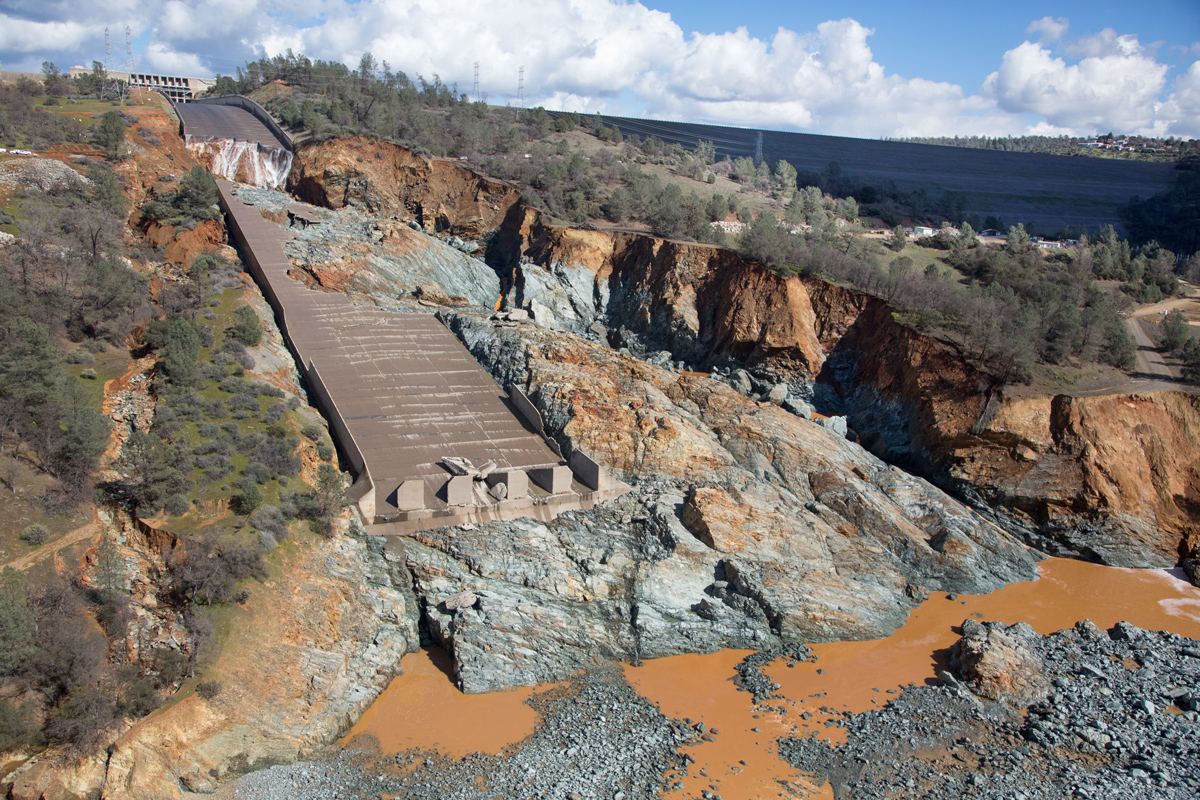
Dramatic new images have revealed the extent of the damage to a spillway on California's tallest dam after weeks of torrential rains pummeled the region.
The images reveal catastrophic damage to the emergency spillway of the Oroville Dam in northern California. The spillway, which is intended to serve as an outlet for overflow water, formed a hole on Feb. 12. But with heavy rainfall in the forecast and a reservoir that was already nearly full, the state's Department of Water Resources had no choice but to use the spillway to avoid causing a huge wall of water to overtop the dam. That would have caused deadly flooding in the communities below the dam, officials said.
Now, as the rain has stopped and water levels in Lake Oroville have dropped to low-enough levels to accommodate rain for the rest of the season, scientists are finally seeing the extensive damage from the huge cascade of water that battered the damaged spillway. [In Images: Dramatic Images of a Damaged Spillway]
Extensive damage
The once-smooth concrete pathway is now cleaved in two, with a huge chunk the size of a football field pounded away, The Sacramento Bee reported. Huge sections of the spillway's mountainside have also eroded.
It's not clear exactly why the spillway failed so catastrophically. The spillway was rated to withstand 250,000 cubic feet (7,080 cubic meters) of water per second, but it developed dangerous levels of erosion in the nearby hillside at just 12,000 cubic feet (340 cubic m) per second on Feb. 11, the Sacramento Bee reported. Ultimately, water-department officials had no choice but to let water flow over the spillway, but they worried that the entire mountainside would come tumbling down with the incessant pounding of water. Luckily, the deeper bedrock exposed by the water is harder than the crumbly, weathered rock on the surface, and the mountainside held together despite the influx of water, The Sacramento Bee reported.
Still, it's not known how the spillway was damaged in the first place. One possibility is that the turbulent rush of water created myriad tiny bubbles that popped violently at the concrete surface — a phenomenon known as cavitation. Cavitation would essentially act like millions of tiny jackhammers pounding away at the surface, the San Jose Mercury News reported.
It's also possible that the roots from nearby trees weakened the concrete, or that five years of drought created small cracks in the spillway that were never patched. This season's inundation could have soaked and further weakened the spillway, creating the perfect storm of conditions, The Sacramento Bee reported.
Sign up for the Live Science daily newsletter now
Get the world’s most fascinating discoveries delivered straight to your inbox.
For now, however, the main reservoir levels are low enough that the spillway likely won't have to be used again for the rest of the rainy season. Engineers must now find a way to repair the spillway before the next rainy season.
Originally published on Live Science.

Tia is the managing editor and was previously a senior writer for Live Science. Her work has appeared in Scientific American, Wired.com and other outlets. She holds a master's degree in bioengineering from the University of Washington, a graduate certificate in science writing from UC Santa Cruz and a bachelor's degree in mechanical engineering from the University of Texas at Austin. Tia was part of a team at the Milwaukee Journal Sentinel that published the Empty Cradles series on preterm births, which won multiple awards, including the 2012 Casey Medal for Meritorious Journalism.









